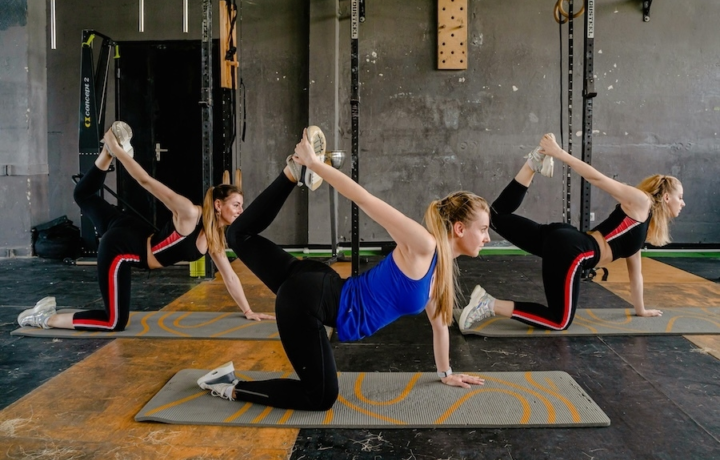Exercise
Sitting Bent-Over Back Stretch

Sitting Bent-Over Back Stretch
How to Perform
- Sit on the floor with your legs extended straight in front of you, keeping your back tall and shoulders relaxed.
- Bend your knees slightly and place your feet flat on the floor about hip-width apart.
- Inhale deeply, then as you exhale, hinge forward from your hips while maintaining a long spine.
- Reach your hands toward your feet, allowing your head to drop naturally between your arms as you fold forward.
- Grasp your ankles, feet, or lower legs depending on your flexibility level, keeping your elbows soft rather than locked.
- Relax your neck and shoulders as you breathe deeply, allowing your weight to sink toward the floor with each exhale.
- Hold this stretched position for 20-30 seconds while continuing to breathe normally, focusing on relaxing your back muscles.
- To release, inhale while gradually rolling up through your spine, returning to the starting position with your back tall.
Important information
- Keep your forward fold initiated from the hips rather than rounding your upper back excessively.
- Only stretch to the point of mild tension, never to the point of pain or discomfort.
- If you have difficulty reaching your feet, use a yoga strap or towel looped around your feet.
- Avoid this exercise if you have acute lower back pain or disc-related issues without professional guidance.

Sitting Bent-Over Back Stretch
Exercise Details
Primary Muscles
Muscle Groups
Mechanic
Risk Areas
Built for progress
Take the guesswork out of training
Create personalized AI-powered workout plans that evolve with you. Train smarter, track every rep and keep moving forward, one workout at a time.






The Sitting Bent-Over Back Stretch offers a gentle yet effective way to release tension in your erector spinae and hamstrings simultaneously. This beginner-friendly stretch serves as a versatile component of your fitness routine, fitting perfectly into warm-ups, cool-downs, or recovery sessions when your muscles need some attention. What makes this stretch particularly valuable is its accessibility: requiring no equipment and minimal space, it can be performed virtually anywhere when you need to decompress your spine and lengthen those hamstrings after prolonged sitting or physical activity.
The stretch works by creating a controlled elongation of the posterior chain, from your lower back muscles that run along your spine all the way down to the hamstrings at the backs of your thighs. Many people carry tension in their back muscles without realizing it, and this stretch addresses that hidden tightness while simultaneously improving your overall mobility. Regular practice can contribute to better posture and may help reduce the risk of back discomfort associated with tight erector spinae muscles. For desk workers especially, incorporating this stretch into daily routines can counteract the negative effects of extended sitting. The beauty of this stretch lies in its simplicity and effectiveness. While it appears straightforward, it delivers profound benefits for your body's mobility systems.
The gentle traction it creates along the spine can help maintain the health of your intervertebral discs and promote optimal nerve function throughout the back. Remember that stretching shouldn't be rushed: this particular movement rewards patience and proper breathing. As with all stretching and mobility work, consistency yields the best results. Making this stretch part of your regular recovery protocol can lead to noticeable improvements in your movement quality, athletic performance, and everyday comfort. Your back and hamstrings will thank you for the regular attention to their flexibility needs.
FAQ - Sitting Bent-Over Back Stretch
This stretch primarily targets the erector spinae muscles along your spine and the hamstrings at the back of your thighs. It also engages the entire posterior chain, including parts of your upper back and calves.
Aim to spend 1-2 minutes total on the stretch, moving the ball slowly to different spots along the base of your skull where you feel tension. For areas with significant tightness, you can pause and apply gentle pressure for 20-30 seconds before moving on.
While generally safe, those with disc injuries, sciatica, or acute back pain should consult a healthcare provider first. Modify by reducing the depth of the forward fold and focus on hinging from the hips rather than rounding the spine.
For optimal shoulder mobility, perform this stretch 1-2 times daily, especially if you spend long hours at a desk. Include it both as part of your pre-workout warm-up and post-workout recovery routine to maximize its benefits and progressively improve your overhead range of motion.
The most common errors include shrugging your shoulders toward your ears, overarching your lower back to compensate for limited shoulder mobility, and stretching too aggressively. Focus on quality over intensity, keep your core engaged to protect your spine, and remember that consistent, gentle stretching yields better results than occasional forceful attempts.








